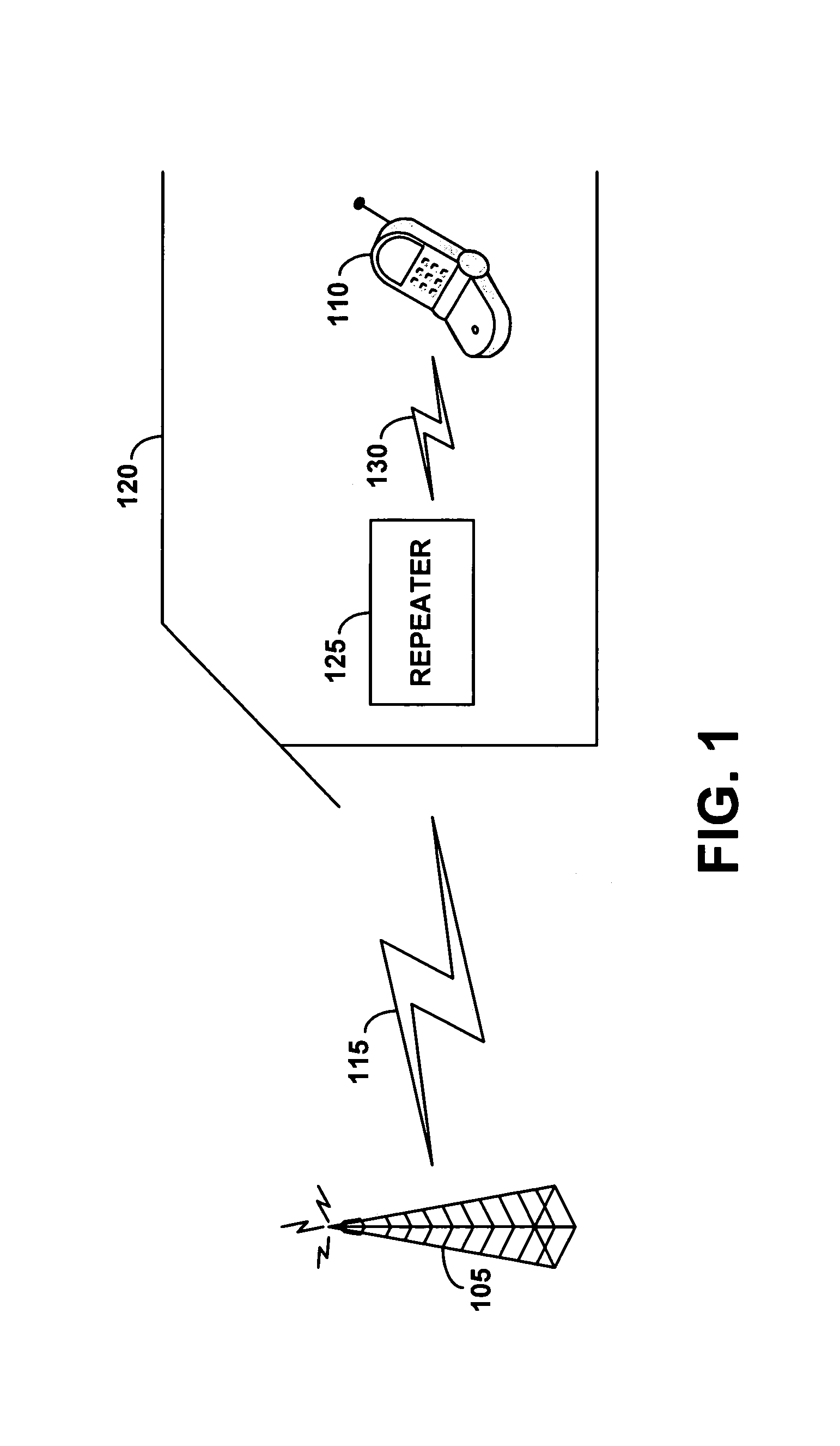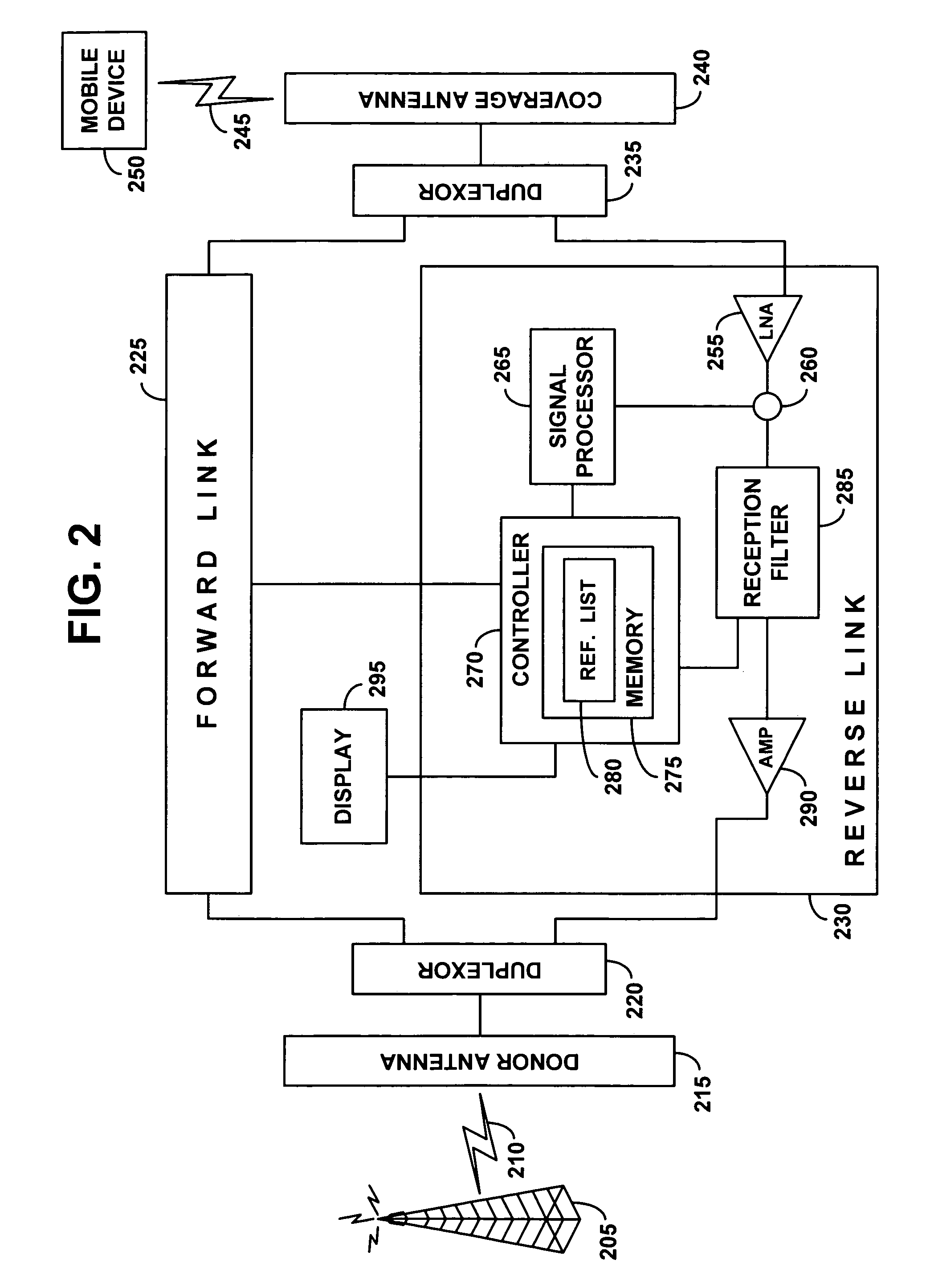Radio frequency repeater with automated block/channel selection
a radio frequency repeater and automatic technology, applied in the field of wireless communications, can solve the problems of unwanted signals and/or noise repetition, insufficient signal quality for reliable communication, and devices, as currently implemented, so as to reduce the likelihood of introducing noise from one signal into another signal, reduce the amount of power consumed, and reduce the effect of radio frequency interferen
- Summary
- Abstract
- Description
- Claims
- Application Information
AI Technical Summary
Benefits of technology
Problems solved by technology
Method used
Image
Examples
Embodiment Construction
[0025]In the following detailed description, numerous specific details are set forth in order to provide a thorough understanding of the invention. However, it will be understood that the present invention may be practiced without these specific details. In other instances, well-known methods, procedures, components and circuits have not been described in detail, so as not to obscure the present invention. The operations of methods described herein may, in some instances, be implemented in other sequences. Therefore, the sequences discussed and illustrated herein are not limiting in scope.
[0026]It is noted, that while this disclosure describes exemplary embodiments generally in the context of cellular communications, it will be appreciated that embodiments of the invention may be employed to repeat wireless signals in other types of communication systems, such as communication systems in accordance with the 802.11 wireless LAN protocol, Bluetooth, and cordless telephone communicatio...
PUM
 Login to View More
Login to View More Abstract
Description
Claims
Application Information
 Login to View More
Login to View More - R&D
- Intellectual Property
- Life Sciences
- Materials
- Tech Scout
- Unparalleled Data Quality
- Higher Quality Content
- 60% Fewer Hallucinations
Browse by: Latest US Patents, China's latest patents, Technical Efficacy Thesaurus, Application Domain, Technology Topic, Popular Technical Reports.
© 2025 PatSnap. All rights reserved.Legal|Privacy policy|Modern Slavery Act Transparency Statement|Sitemap|About US| Contact US: help@patsnap.com



